

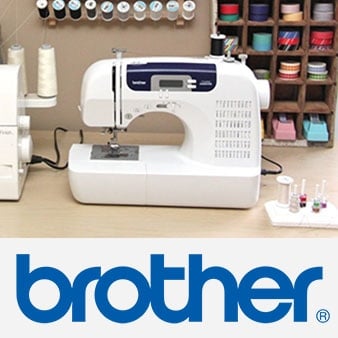
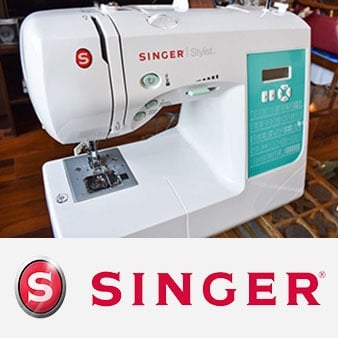
Brother and Singer are the two biggest brands of sewing machines in the US and in many other countries around the world. If you’re looking for a sewing machine that offers all the features you may want whether you’re a beginner or a seasoned user, chances are you’ll come across the Brother vs Singer choice when you’re doing your research.
Both brands have a rich history of producing high-quality sewing machines and the good news is that you can’t go wrong with any of them. However, each of these two brands could turn out better for certain users, depending on a couple of different factors, including the type of sewing machine you’re interested in buying, the features you want to have, and your budget.
We’re taking a look at both brands and do a detailed Brother vs Singer comparison so you can easily decide which one fits your needs better.
Brother sewing machines have been at the forefront of stitching innovation for more than a century. The company was started back in 1908 by Kanekichi Yasui in Nagoya, Japan, and it was initially called the Yasui Sewing Machine Co. After his sons inherited the company, they reinvented it as Bother Industries and turned it into a large-scale factory that quickly expanded, and their product became popular around the world.
Today, Brother offers a selection of high-quality sewing machines suitable for beginners and professionals alike. Their sewing machines are highly versatile and many of them go beyond the basics, featuring extension tables, free arms, and serving multiple purposes such as quilting, for example. The company also produces embroidery machines, combo sewing and embroidery machines, and semi-professional embroidery machines.
The company offers a three-year sewing machine warranty for most of its models, and there is no need to register your warranty, as the receive is your proof of purchase.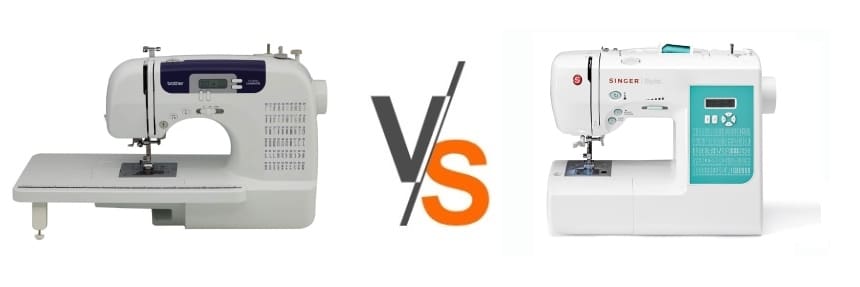
Singer is an even older company than Brother, and it was first established in 1851 by Isaac M Singer in La Vergne, Tennessee. The first designs manufactured by the company were intended for general domestic use, and by the late 1800s, the company went electric and started mass-producing electric sewing machines for domestic use.
Today, the company manufactures a wide range of models that can satisfy both beginners and experts. Computerized sewing machines are part of the brands offer, providing users with LCD screens for easy and intuitive use, together with multiple other features that make sewing easy, including needle threaders, automatic thread cutters and built-in stitches styles.
Heavy-duty sewing machines are also available from Singer, and they come in handy for users who need to tackle more prominent projects or use thicker materials.
Both Brother and Singer have multiple types of sewing machines that cover the needs of most users. When choosing between them, consider the way you intend to use the machine and any extra features that could be useful for you.
Below we’re comparing some of the most popular Brother and Singer models so you can easily find the best sewing machine that suits your needs.
The Brother cs6000i has become known in the world of sewing as one of the best machines around for those who want to try their hand at quilting. On the other hand, the Singer 7258 offers more options for users when it comes to decorative stitches, as it has a higher number of stitches built in.
The Brother cs6000i has 60 built-in stiches, whereas the Singer 7258 has 100, and 76 of these are decorative. Only 20 of the stitches included with the Brother cs6000i are decorative. The Brother is a better option for those who are interested in more everyday stitches and is also a good option for users who want to learn quilting because it comes with seven quilting matches.
Both machines make it easy to select the stitches with the help of the buttons, so bottom-line, if you need more decorative stitches, the Singer 7258 is the machine for you.
The Brother cs6000i wins when it comes to speed because it can go up to 850 stitches per minute, whereas the Singer only has a maximum speed of 750 stitches per minute. Speeds matter a lot, as anyone who’s ever done any machine stitching knows, so the cs6000i is definitely the better choice as it’s faster. Both machines are equipped with speed control, which means that you can choose the pace you like according to the project you’re working on.
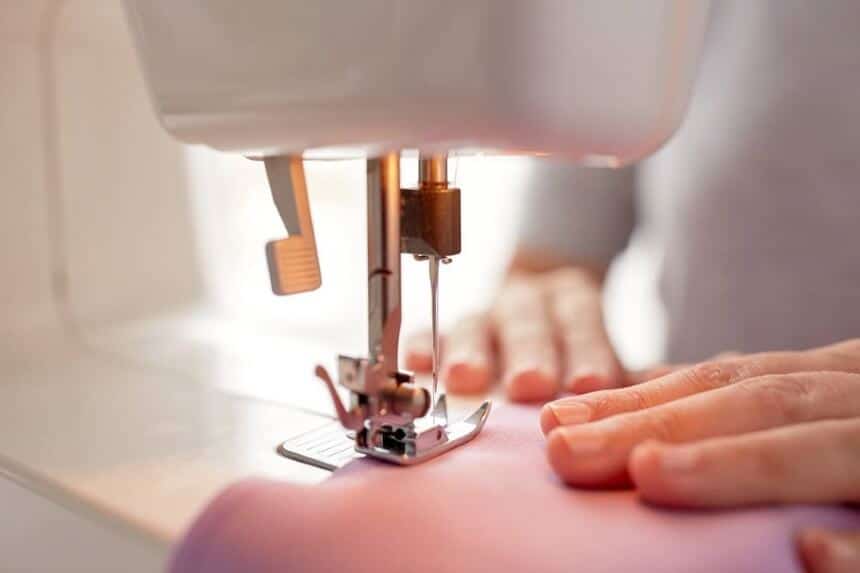 The stitch length of the Brother cs6000i is 5mm, whereas that of the Singer 7258 is 4.5 mm. This feature is important because longer stitches make a looser seam, whereas shorter ones make a tighter one. When it comes to stitch width, the Brother cs6000i is 7 mm and the Singer 7258 is a bit narrower at 6 mm.
The stitch length of the Brother cs6000i is 5mm, whereas that of the Singer 7258 is 4.5 mm. This feature is important because longer stitches make a looser seam, whereas shorter ones make a tighter one. When it comes to stitch width, the Brother cs6000i is 7 mm and the Singer 7258 is a bit narrower at 6 mm.
Both the Brother CS6000i vs Singer 7258 sewing machines have a free arm, which you can use to sew tube items such as cuffs, sleeves, trouser legs and more. In the case of both sewing machines, the free arm is convertible so it doesn’t get in your way when you don’t need it.
The Brother CS6000i has seven one-step buttonholes, whereas the Singer 7258 only has six. For the Brother model, you can expect a buttonhole foot and a buttonhole fitting food, whereas the Singer has a buttonhole foot and a blind hem foot as well.
The Brother CS6000i has an LCD display that allows you to select your stiches easily. The LCD is backlit, so you can use the machine comfortably in the evening. It displays all the features you have selected for a particular project, including the sewing speed and type of stitch. The LCD screen of the Singer 7258 is a bit smaller, but it still manages to tell you everything you need to know. Both machines have multiple buttons that make selecting the settings super easy.
The Singer 7258 is not too heavy at 14.8 pounds, and most people shouldn’t have any trouble carrying it around. However, the Brother CS6000i only weighs 13 pounds, which makes it a better choice if you’re looking for a lightweight model.
Both the Brother CS6000i and Singer 7258 sewing machines come with a 25-year limited warranty for extra peace of mind.
The Brother ST371HD and SINGER 4423 have a lot of features in common, including, among others, a free arm, one-step buttonhole, and automatic needle threader, which are all perfect choices for beginners. There are, however, numerous differences between the two sewing machines, too, and here’s a detailed comparison so you can easily choose the best one for you.
The difference in the number of stitches is one of the first you may notice in the Brother ST371HD vs SINGER 4423 comparison. The Brother ST371HD has 37 built-in stiches, and one of these is a one-step buttonhole. With the SINGER 4423, you can only expect 23 built-in stitches, which also include a one-step buttonhole. As you can see, you get 14 more stitches with the Brother ST371HD.
The SINGER 4423 has a clear advantage when it comes to speed, as its motor is one of its strongest selling points. The machine can deliver 1,100 stitches per minute, which is one of the best speeds you can find in a sewing machine. The Brother ST371HD can only deliver 800 stitches per minute, which is a good speed, but can’t match the speeds offered by the Singer sewing machine.
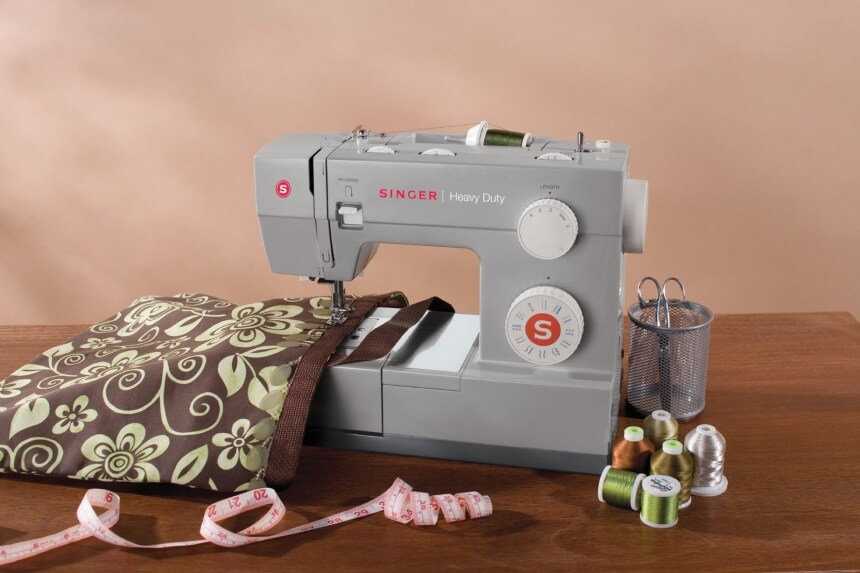 There are a couple of differences when it comes to the stitch length and width for the two models. The Brother ST371HD has a maximum stitch length of 5 mm, whereas the Singer 4423 has a maximum stitch length of 4 m. When it comes to stitch width, you’ll get 7 mm with the Brother ST371HD and just 6 mm with the Singer 4423. Both of them are quite versatile sewing machines from this point of view, so the choice should ultimately be based on the types of projects you intend to use the machines for.
There are a couple of differences when it comes to the stitch length and width for the two models. The Brother ST371HD has a maximum stitch length of 5 mm, whereas the Singer 4423 has a maximum stitch length of 4 m. When it comes to stitch width, you’ll get 7 mm with the Brother ST371HD and just 6 mm with the Singer 4423. Both of them are quite versatile sewing machines from this point of view, so the choice should ultimately be based on the types of projects you intend to use the machines for.
Both the Brother ST371HD and SINGER 4423 have a free arm incorporated, which comes in handy when you want to work with tubular projects, such as sleeves or pant legs. The free arm is collapsible in the case of both sewing machines.
There are not differences between the Brother ST371HD and SINGER 4423 when it comes to the number of button holes available, as both of them come with a single one. The buttonhole comes in handy when you want to reinforce buttonholes to prevent the fabric from raveling, and both sewing machines offer an easy way to do so.
None of the two sewing machines comes with an LCD display, but the knobs are intuitive to use, so you can easily select the stitches and other settings even without visual aid.
The Brother ST371HD and SINGER 4423 are just about the same in terms of weight, with the first weighing in at 14.3 pounds, and the latter being just a bit heavier at 14.5 pounds. The sewing machines are lightweight enough so you can easily transport them and even take with you for classes if needed.
Both the Brother ST371HD and SINGER 4423 are covered by a 25-year limited warranty, so you don’t have to worry about paying for repairs if something goes wrong anytime soon.
The SINGER Quantum Stylist 9960 is one of the most popular sewing machines on the market for users who are interested in a very large library of preset stitches. Moreover, the machine is jam-packed with features and functions, which makes it ideal for advanced users. On the other hand, the Brother XR9550PRW is the perfect choice for those who are looking for a sewing machine that’s super easy to set up and use. Let’s see how they compare!
The SINGER Quantum Stylist 9960 comes with no less than 600 stitches included, which is an astounding number for a domestic sewing machine. The stitches it produces are superb and even beginners can create above-average buttonholes with ease. The Brother XR9550PRW only offers 110 stitches, which is definitely a disadvantage in the comparison. However, even though Singer is the clear winner here, Brother still comes with a library of stitches that should cover most of your projects.
The Brother XR9550PRW and SINGER Quantum Stylist 9960 are pretty similar in terms of speed, with the Brother clocking in at 800 stitches per minute and the Singer being a bit faster at 850 stitches per minute. Both machines are super-fast, which makes them perfect for more experienced users or for those who want to tackle a lot of apparel.
The stitch length for the two sewing machines is the same at 5mm. This is also true for the stitch width, which is the 7 mm for both the Brother XR9550PRW and SINGER Quantum Stylist 9960. The stitches you can obtain with the Singer are well above average, while the those delivered by the Brother model are slightly inferior.
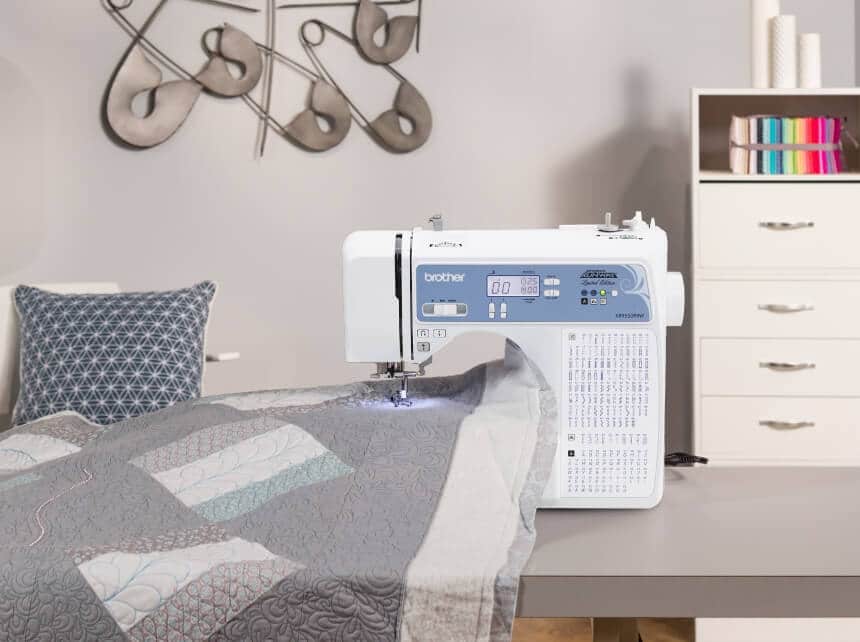 Both the Brother XR9550PRW and SINGER Quantum Stylist 9960 offer a free arm, which is also removable in the case of both models. The free arm helps you to get to hems, cuffs, and any other places that are difficult to reach. It’s easy to switch the needle position for top stitching, zippers, cording and more with both sewing machines.
Both the Brother XR9550PRW and SINGER Quantum Stylist 9960 offer a free arm, which is also removable in the case of both models. The free arm helps you to get to hems, cuffs, and any other places that are difficult to reach. It’s easy to switch the needle position for top stitching, zippers, cording and more with both sewing machines.
If you’re looking for a sewing machine that comes with a large selection of button holes, both models do very well in this department. The SINGER Quantum Stylist 9960 has 13 built-in button holes, while the Brother XR9550PRW trails behind at 8 built-in button holes. Many entry-level sewing machines only have one button hole, so these two particular models are well equipped to satisfy the needs of more experienced users.
There is an LCD screen included with both machines, with the SINGER Quantum Stylist 9960 sporting a backlit black and white display that offers you all the information you need regarding not only the stitches you’re using, but also which presser foot is best for your job. The Brother XR9550PRW also has a large backlit screen that’s also black and white and makes it easy to navigate through the functions of the machine.
The SINGER Quantum Stylist 9960 is significantly heavier at 18.2 pounds, while the Brother XR9550PRW only weighs 10.14 pounds. If you’re looking for a lightweight model that you can easily transport from one place to another, the Brother XR9550PRW is clearly the winner here. On the other hand, the Singer is a sturdier machine, so if you don’t mind the weight, you’ll be enjoying a very stable sewing machine.
Both the Brother XR9550PRW and SINGER Quantum Stylist 9960 come with an extensive 25-year warranty. You don’t have to register the warranty, but make sure you keep your receipt as proof of purchase, as you will need it if you need to claim something on the warranty.
It’s difficult to choose an overall winner in the Brother vs Singer battle because both brands are premium ones and it ultimately comes down to what you’re sewing and your budget.
If you’re looking for a quality, inexpensive sewing machine, Brother offers more choice than Singer. However, if you’re interested in a machine that can handle heavier fabrics, lots of thick layers, and lots of apparel, Singer may be a better choice for you. Finally, if you’re interested in an embroidery machine, Brother’s selection is the better choice.
The bottom line is it can depend on your needs and the model you’re looking at. Both Brother and Singer produce high-quality sewing machines that you can use to complete many types of projects. Most of the machines are a good choice if you’re a beginner and the good news is that they’ll still be great as your skills grow.